FINAL EXAM - Renaissance - Modern Art History
1/27
Earn XP
Description and Tags
Neo Classism - Post Impressionism
Name | Mastery | Learn | Test | Matching | Spaced |
|---|
No study sessions yet.
28 Terms
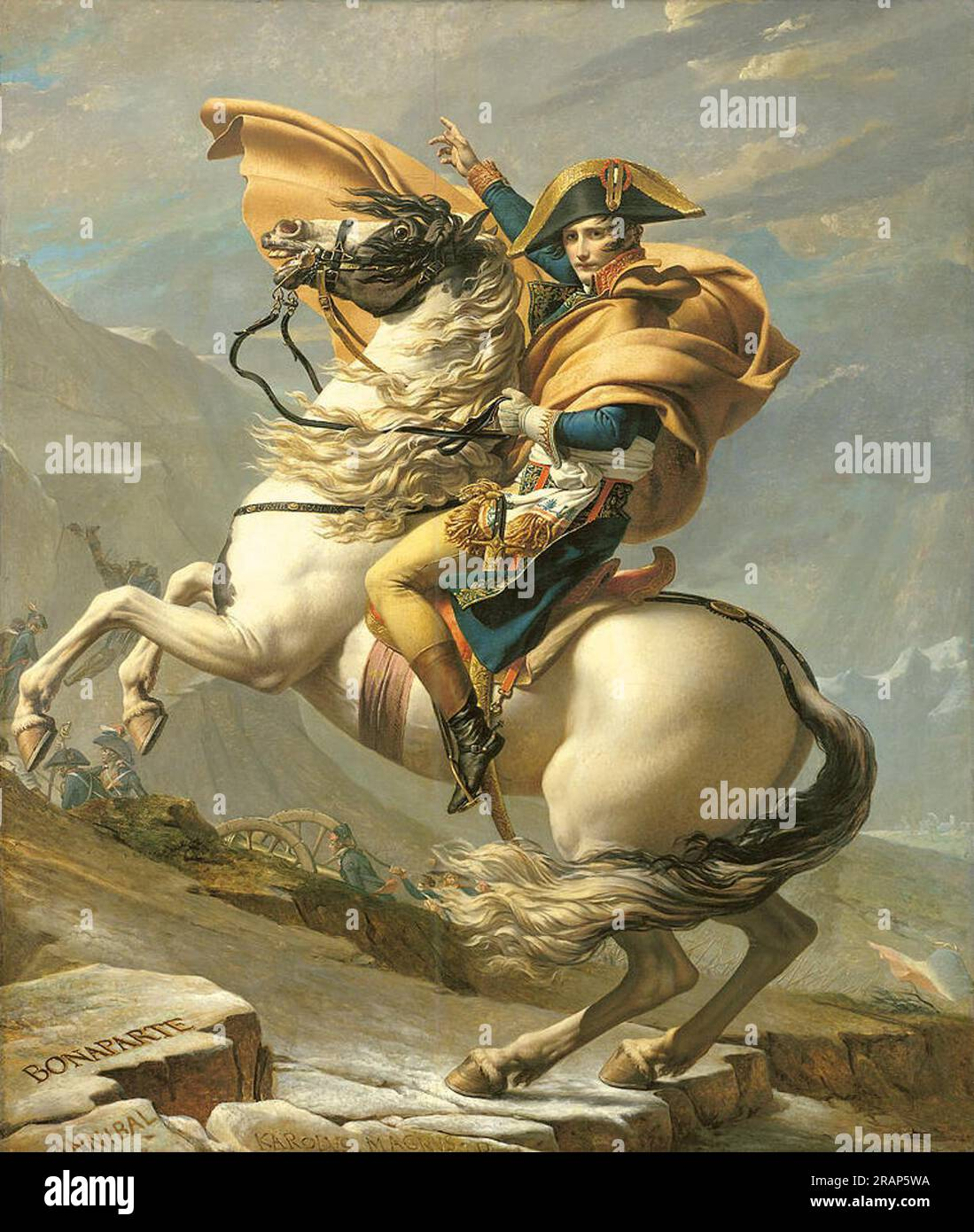
David, Napoleon Crossing St. Bernard’s Pass
Neo-Classicism
David is hired by Napoleon to make several portraits of Napoleon.
Grand dramatic lighting shining upon him
Vivid red cloak that pops out and swirls around him
puts his name in the rock.
Grand Gesture, “Onward, we go.”
Napoleon’s cloak adds in more sizeto him, horse looks small
Napoleon complex, short man complex
the reality, Napoleon crossed this mountain on a clear sunny day on a donkey.
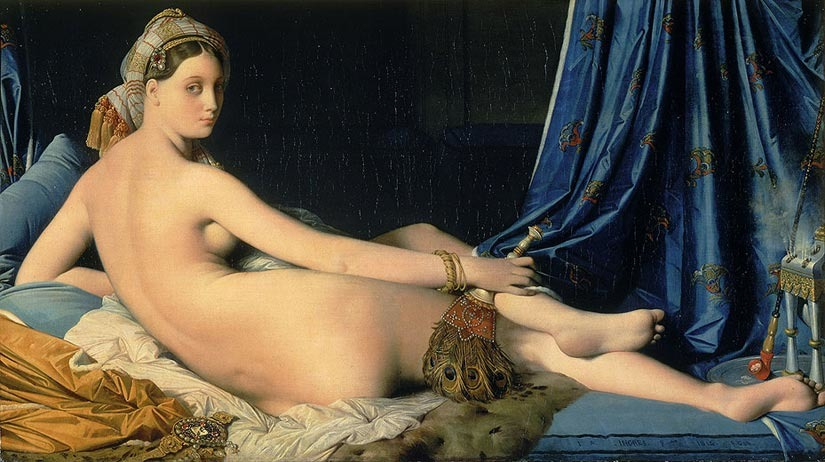
Ingres, Grand Odalisque
Neo-classicism
controversial: wealthy people do NOT want to see that
sex-slave in a harem
turned away to tempt the viewer, pulling the curtain to cover herself
average Turkish/Middle Eastern woman but depicted as a more European for his wealthy European audience.
wanted to emulate Raphael
borrowing a little from mannerism
very long back
inaccurate portrayal
strongest example of orientalism
popular at the time to be interested in exotic cultures
She is seen as an exotic creature from a foreign land.
peacock feathers, turban, jewelry, hooker
hard to read face, often believed the audienece is viewing her as a captive animal in a zoo.
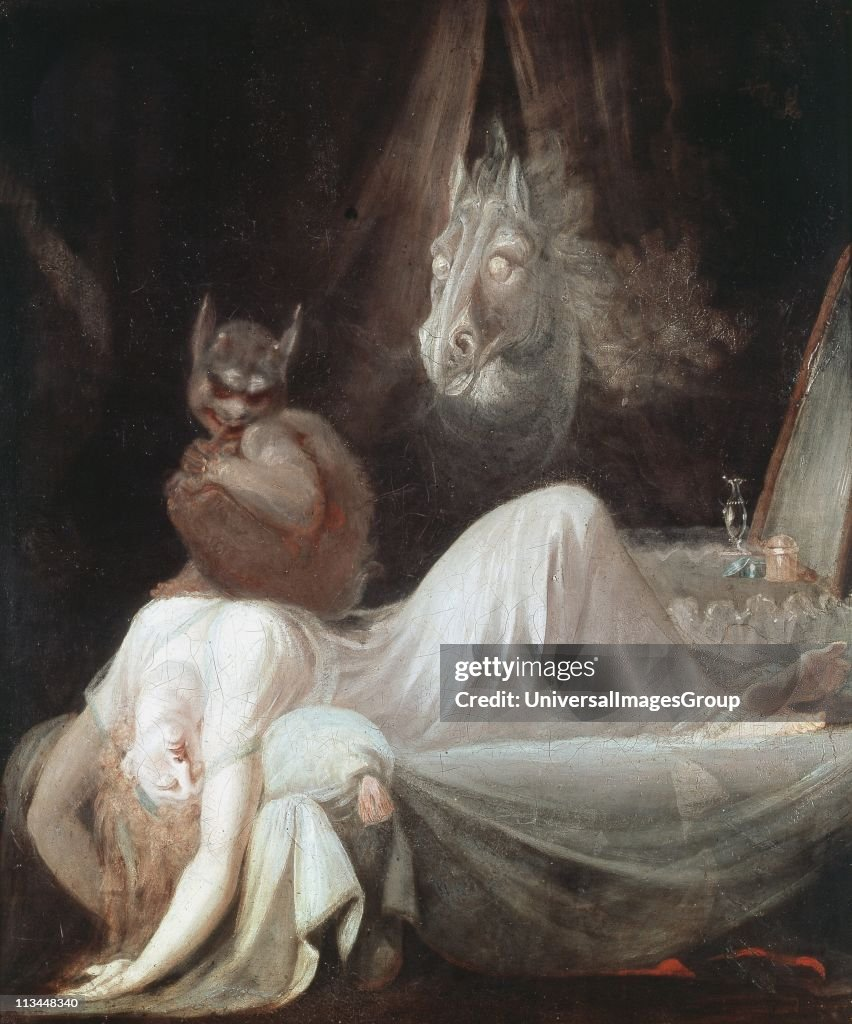
Fuseli, The Nightmare
Romanticism
when you sleep, the rational thinking side of your brain subsides and your other side roams free.
ideas of what’s lurking when your rational side goes to sleep.
The horse is an incubus that got rejected by a beautiful woman and has sex with sleeping women and various other acts.
Exploring what happens when someone is not rational.
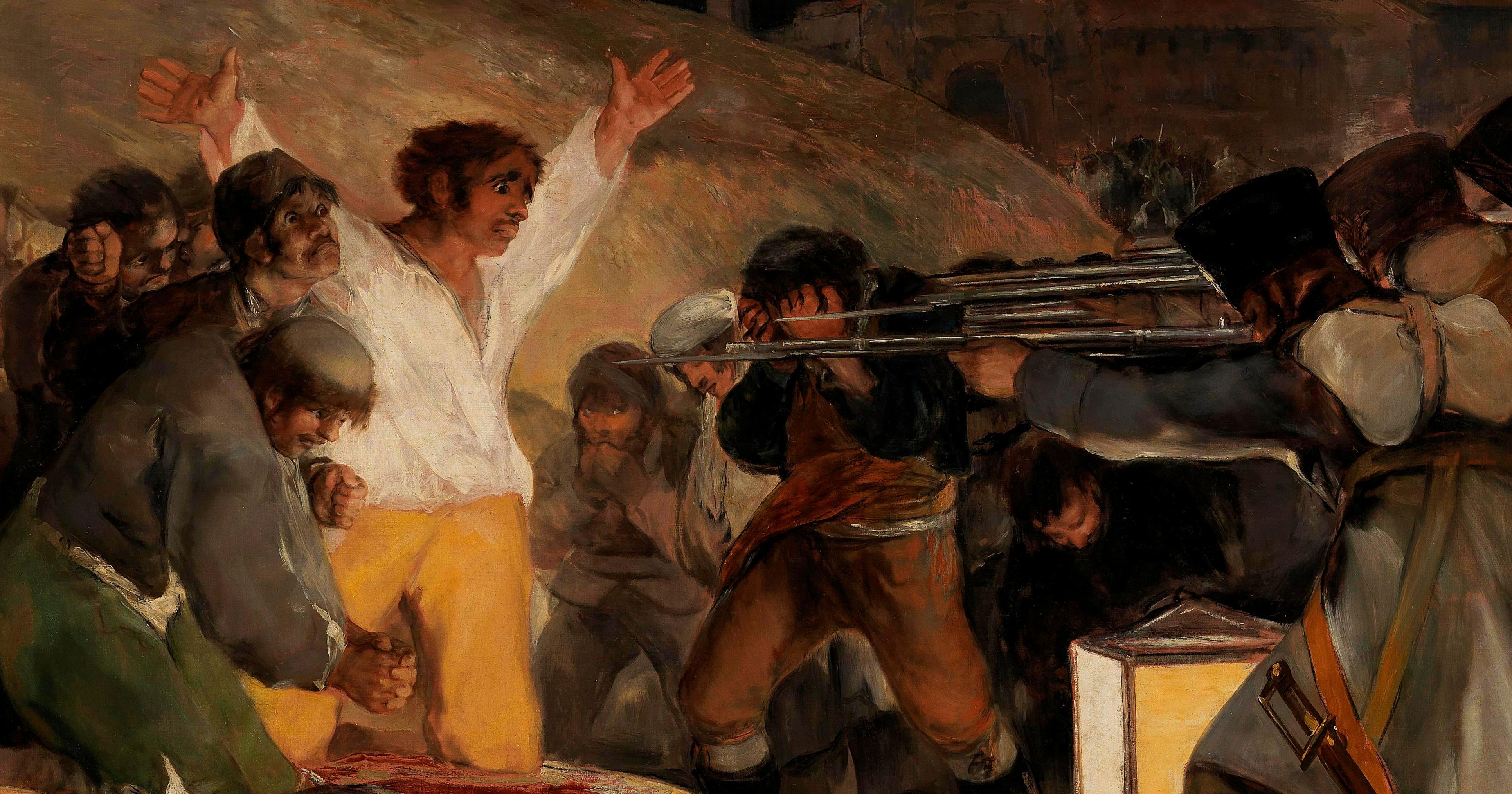
Goya, The Third of May 1808
Romanticism
most famous romanticism painting
based on an actual event, when Napoleon is trying to invade and attack Spain. Tried to capture and murder the Spanish Royal family in Madrid.
Huge uprising of Spainards citizens trying to stop them.
On the 3rd of May, those who were arrested by Napoleon’s troops were ordered to be rounded up and shot.
Evils, what one man can possibly do to another.
Doesn’t have crisp or clear definition of the details.
Loose brushstrokes ex.) white shirt and Hill
Like “the Jolly Toper” by Hals
very dark painting like Rembrandt
back to more expressive, emotional faces
some Spainards are hiding their faces, afraid of what is going to happen to them.
Doesn’t give us the crisp look at it like Gentileschi; as it was a scene of revenge
Central figure is Christ-like, typically the brightest figure, Christ-like sacrifice
soldiers are painted together as a blob as if they are one solid piece. No faces depicted purposefully
Goya was accused of heresy of the Spanish Inquisition, lost faith and moved to France and stopped making art.
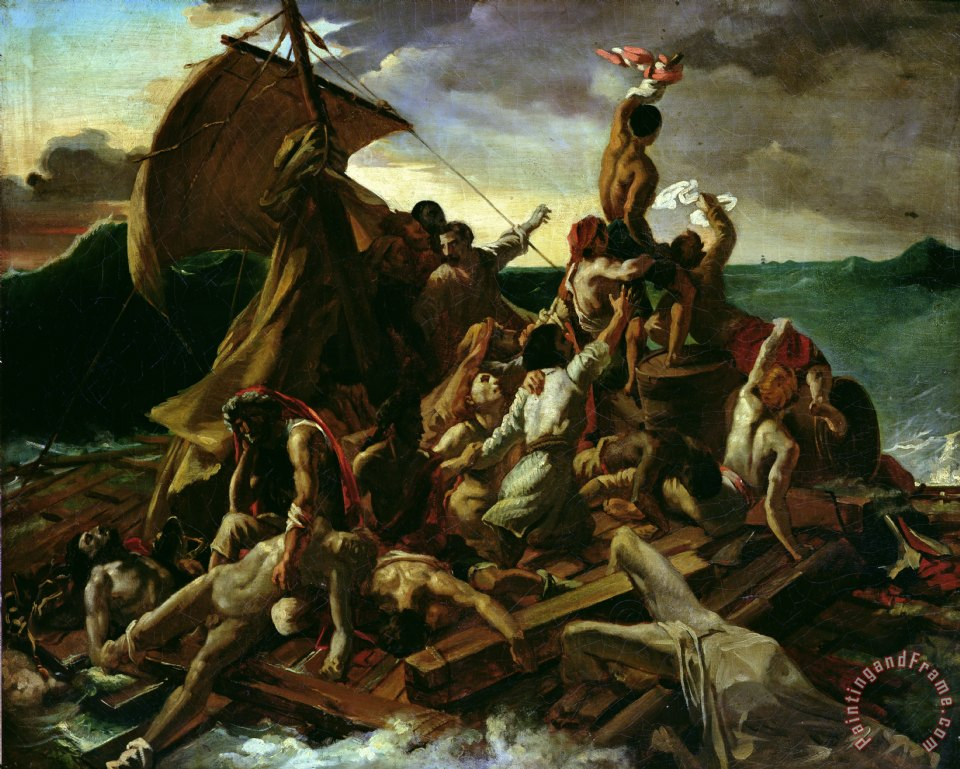
Gericault, Raft of the Medusa
Romanticism
16ft x 23ft
life-sized figures
reminiscent of mannerism, twisted positions
unsettled, lots of movement, in turmoil, uncomfortable
perfected Greek and Roman bodies
based on a real event, there was a government ship from France, hit bad weather and had a shipwreck. Govt. officials and wealthy were the only ones saved. The rest were out there for at least 2 weeks. When rescue came to save the little amount of people who survived.
disturbing
very political, but still art aimed for the rich
legends of mutiny and cannibalism
possibility of the dark things that lurk in our minds and what one man can do to another.
Violent portrayal of the sea, violence of nature is one level and then the level of human violence on the ship
Very dramatic like baroque
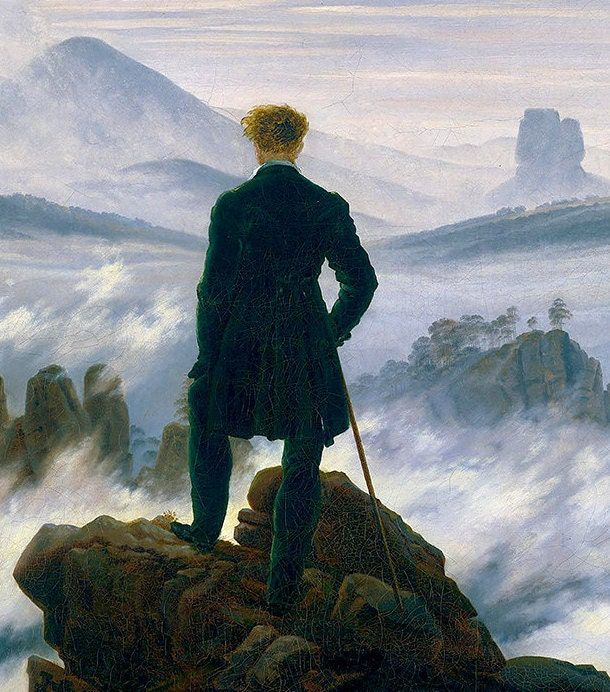
Freidrich, Wanderer Above a Sea of Mist
Romanticism
another well-known ex. of romanticism
Man deep in nature, looking over a mountain-scape or shores
Sublime: refers to the awe or beauty of nature. OR awed by the possible power and/or danger of the nature arond you.
could be inspired by the beauty or dangers of power of nature, could slip and fall

Courbet, The Stone Breakers
Realism
stone breakers made the gravel for roads and railroads
Avant garde: military term “front guard” in French. Considered to be radical and new, often politically engaged as well and first associated w/realism
pushing boundaries
sledgehammers and only a tuff of hay to rest his knee. Everyday breaking big rocks into smaller rocks
This job considered one of the lowest of the low
Courbet purposefully chose this profession to portray
the painting was deemed as repulsive by viewers and critics
The clothing was shabby, the old man was wearing what seems to be his best clothes at some point, vest specifically. Old fashioned pants and shoes. The younger man has tattered but contemporary clothing.
Artists made the paintings in hopes that the wealthy would buy it, yet Courbet chose the lowest of the low
Not planned or displayed poses, real scene in their lives and not crisply rendered
limited color palette, very brown
looks unfished and unskilled
purposefully doesn’t portray their faces, as that is what the wealthy views them, unimportant but common people paving the way for their luxuries.
If the wealthy saw a stonebreaker, they would’ve viewed them as anonymous unseen workers
un-thanked and unthought of, force the wealthy to see them. Roads aren’t magically made.
the roads and modernizing of the city is on the backs of people like this.
Shows both a younger and older man to show the trap or circle of the poor, the old man used to be the younger man at some point and vice-versa, working until you die or get sick.
Often critiqued on being very confrontational, no foreground
Purposefully using techniques that the Art Academy doesn’t like, limited color palette, loose brushstrokes, dark blob background, very flat, using space badly.
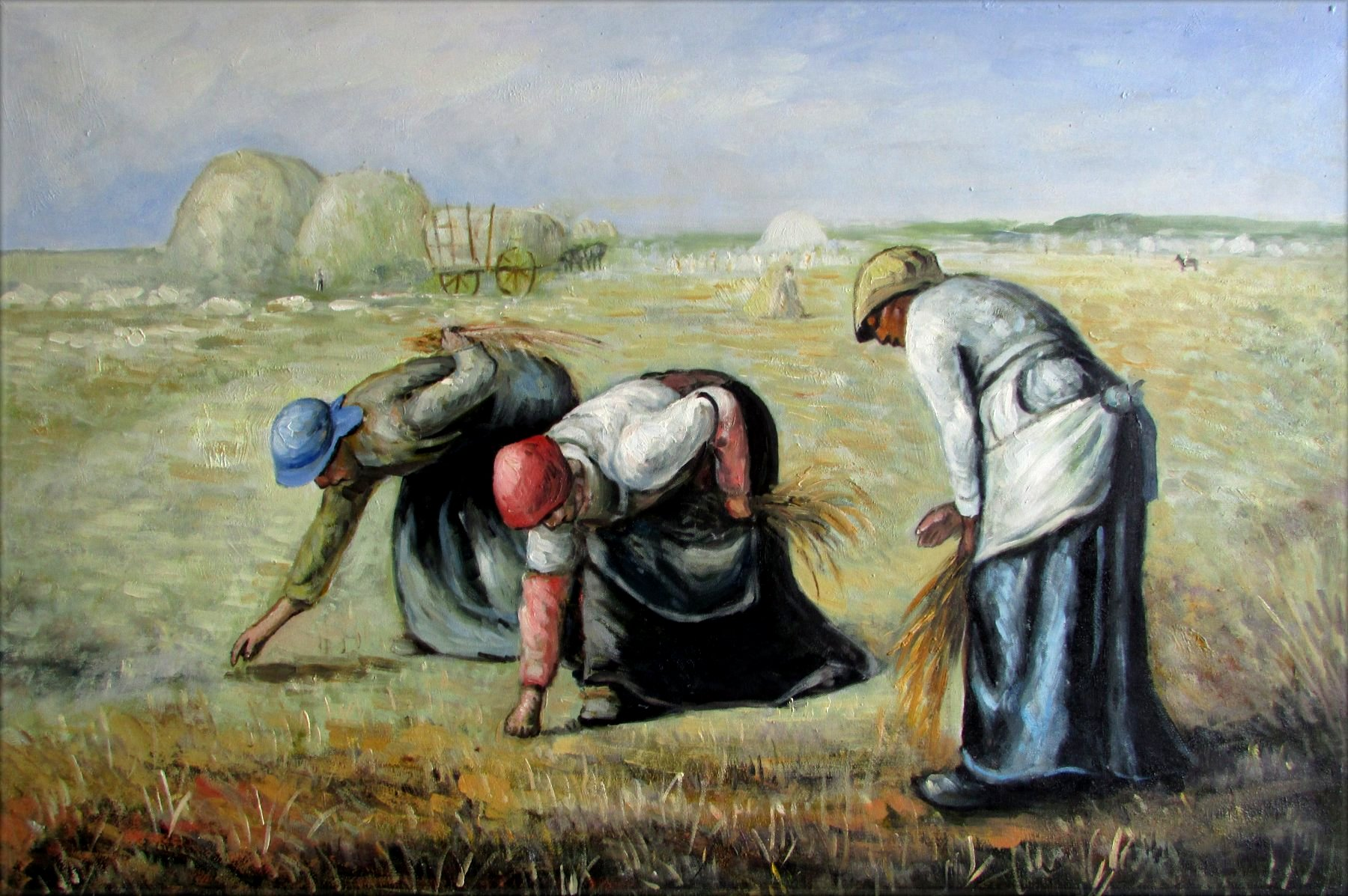
Millet, The Gleaners
after the main crop is harvested, the Gleaners come through picking up even the grains of wheat, whatever is left behind.
lowest of the low agricultural job
some usage of space, more of a foreground compared to other Realism paintings
Millet’s paintings are more hopeful depictions of the lower class. Showing more dignity as they are depicted less harshly.
Unseen faces, to show how the wealthy view the lowest class, cannot emotionally connect w/them. just viewed as workers.
Realism

Degas, Place De La Concorde
realism
new social type of person, Flaneur - to stroll in French, someone strolling around the city, way they experience life, slowly like a stroll.
Flaneurs were typically wealthy men, well-dressed and well-mannered but detached observer of city life, check it all out at a leisurely pace.
At this time it is popular to have exotic pets, likes monkeys and turtles, flaneurs are sometimes described as if they were walking their pet turtle.
There is a flaneur on the far left, barely in the painting, has a walking stick, gloves, ascot, etc.
The family and the dog depict mental vacancy, none of them are looking at the same place, have a glazed over look.
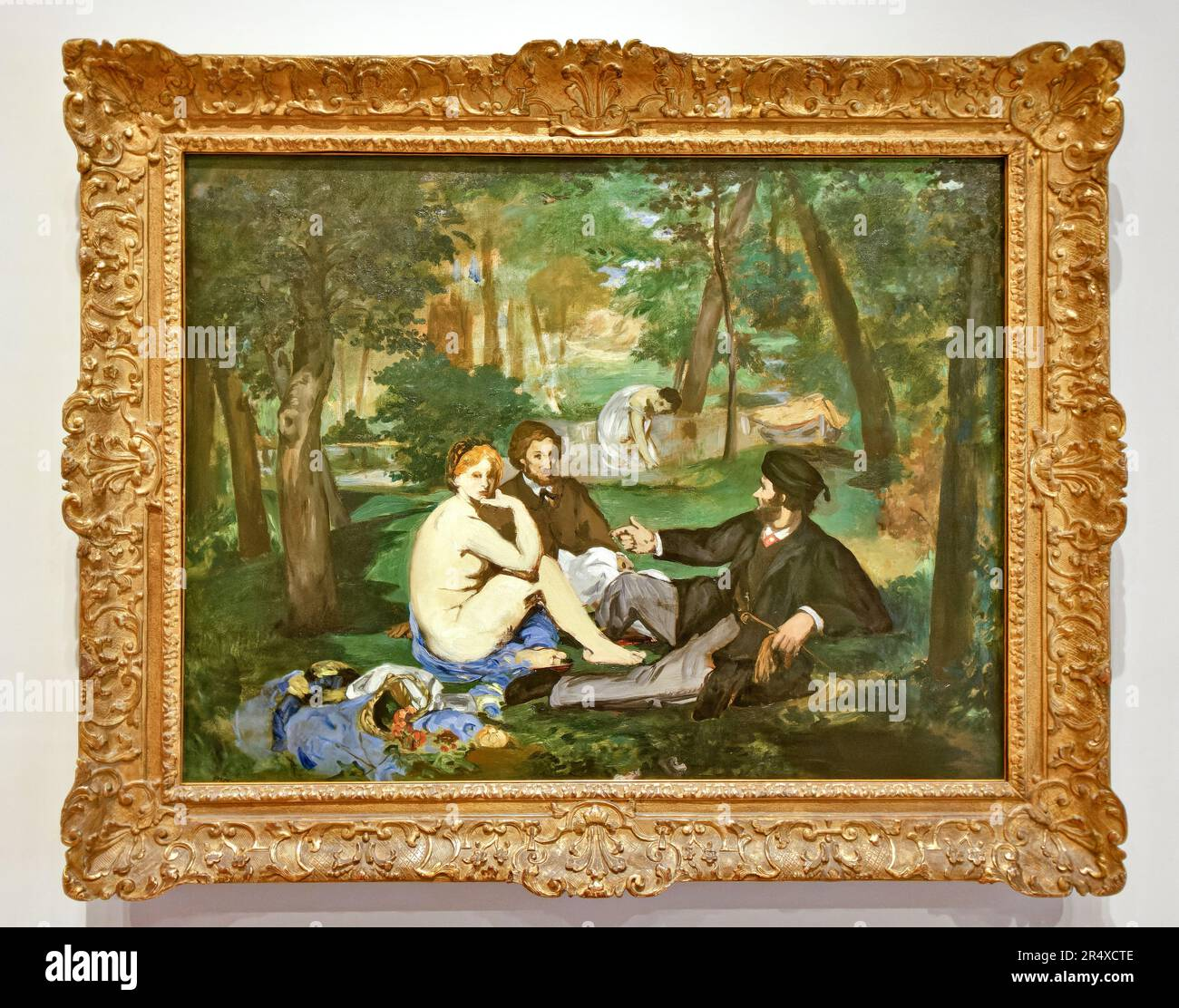
Manet, Luncheon on the Grass
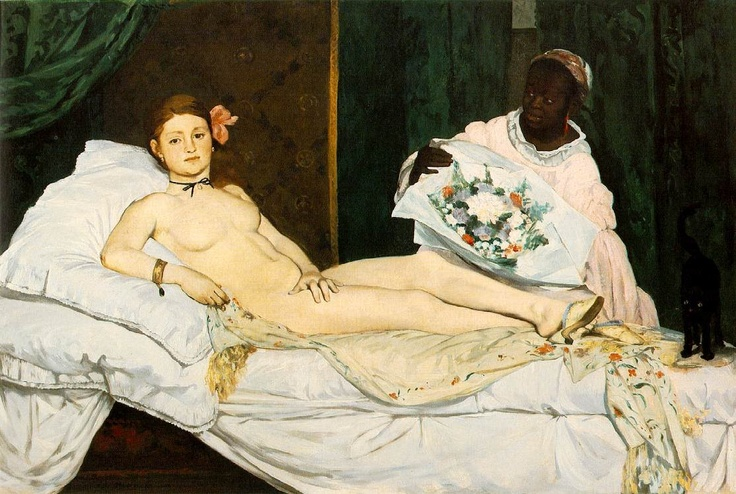
Manet, Olympia
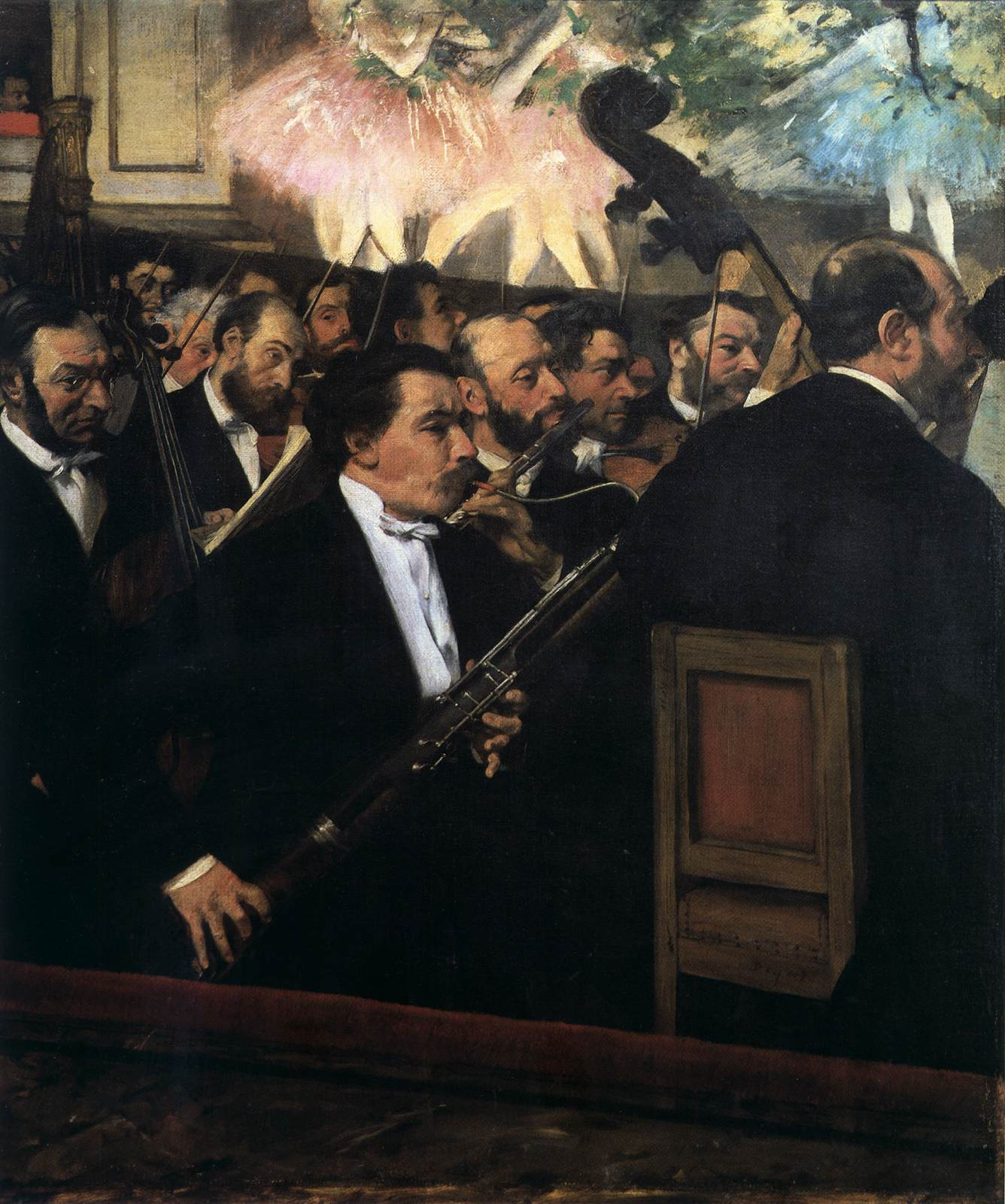
Degas, Orchestra of the Paris Opera
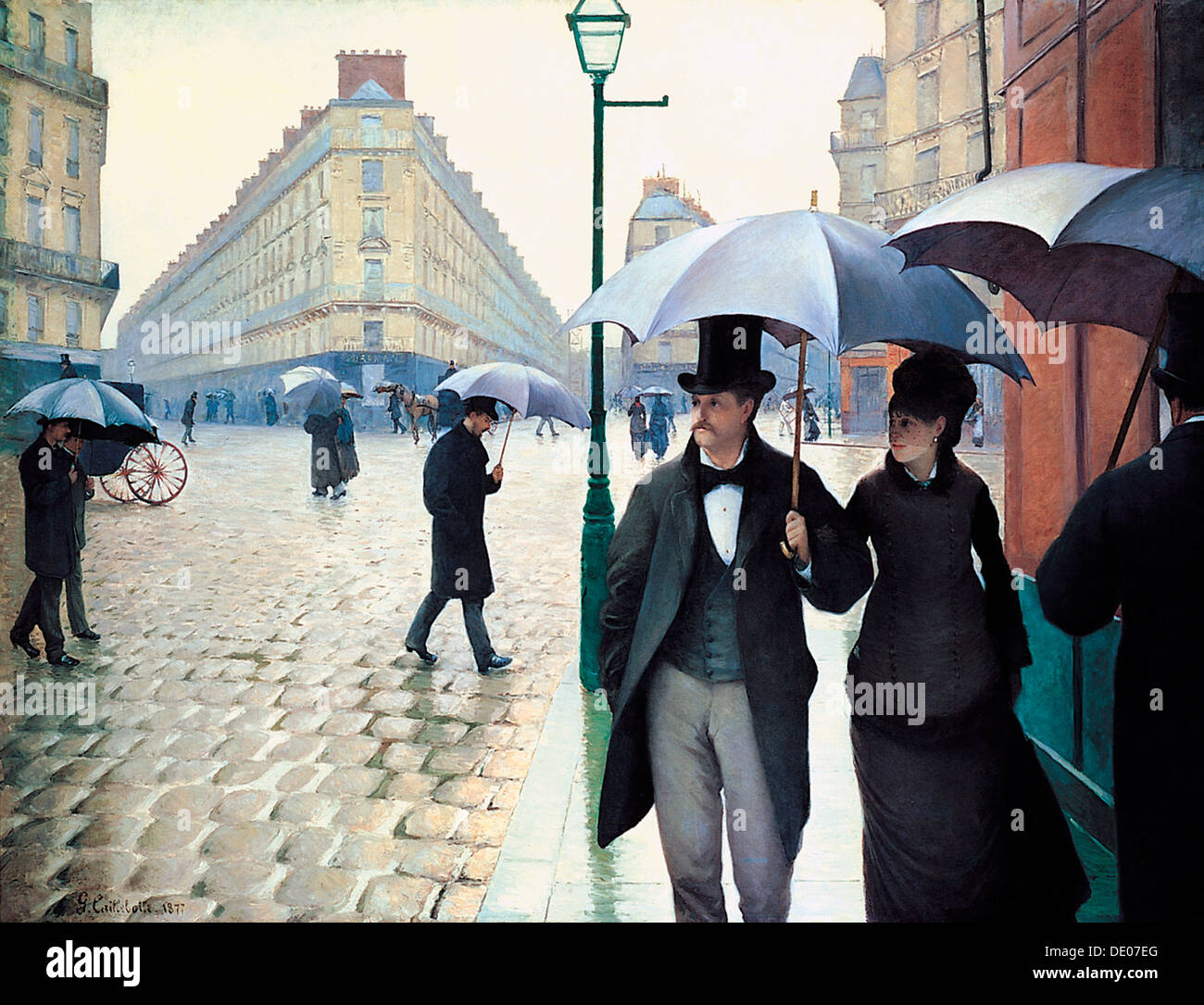
Caillebotte, Paris Street: Rainy Day
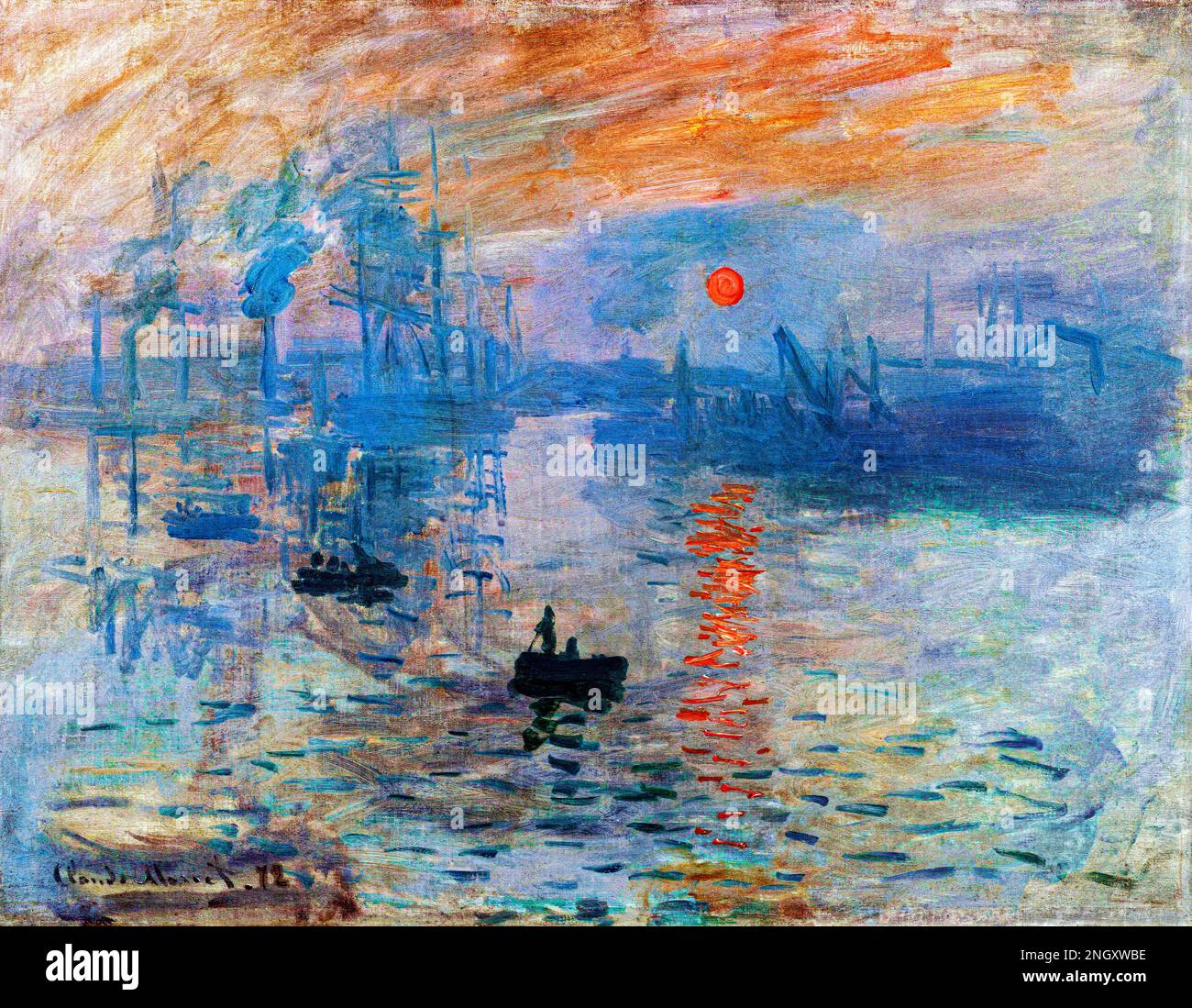
Monet, Impression, Sunrise
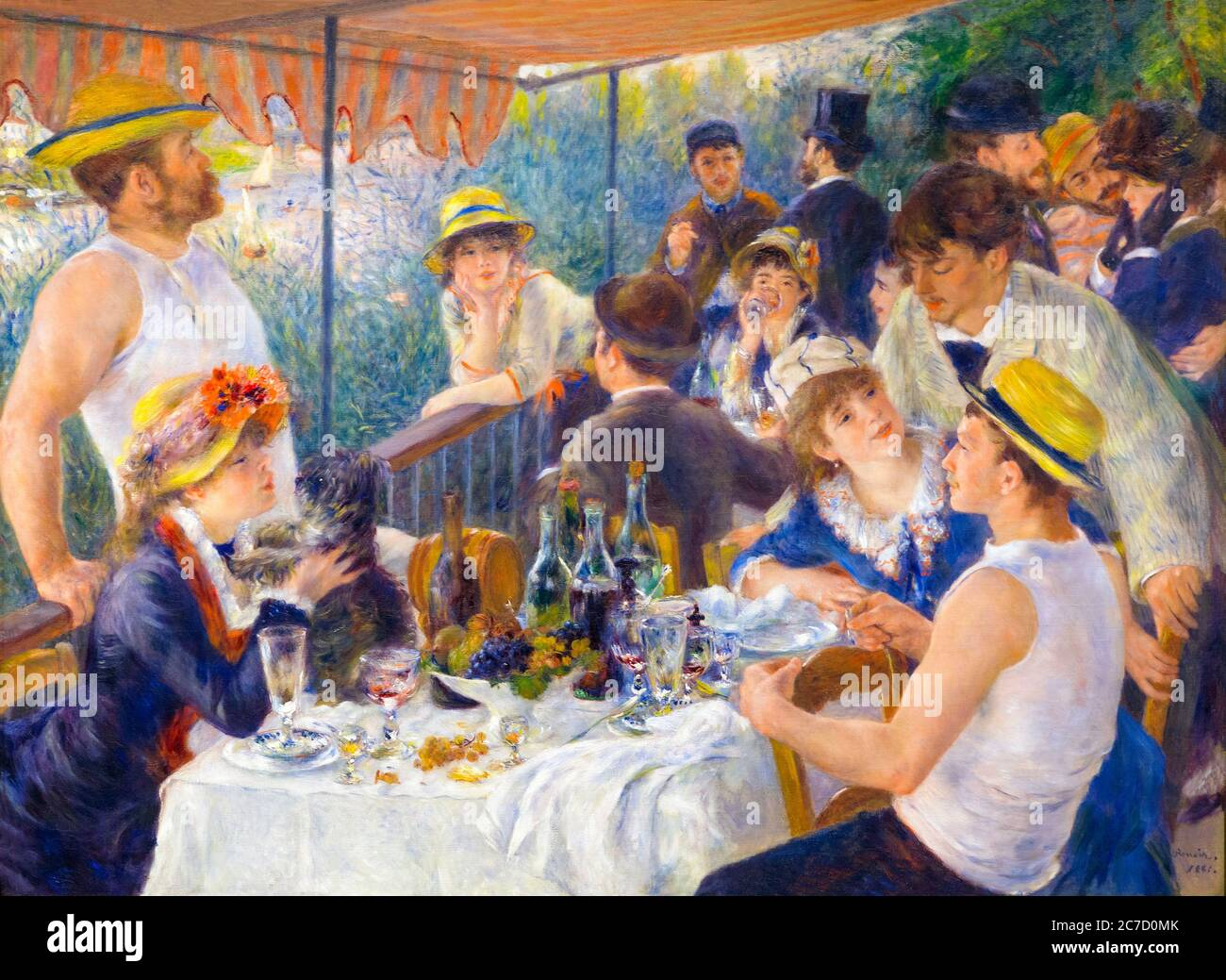
Renior, The Boating Party
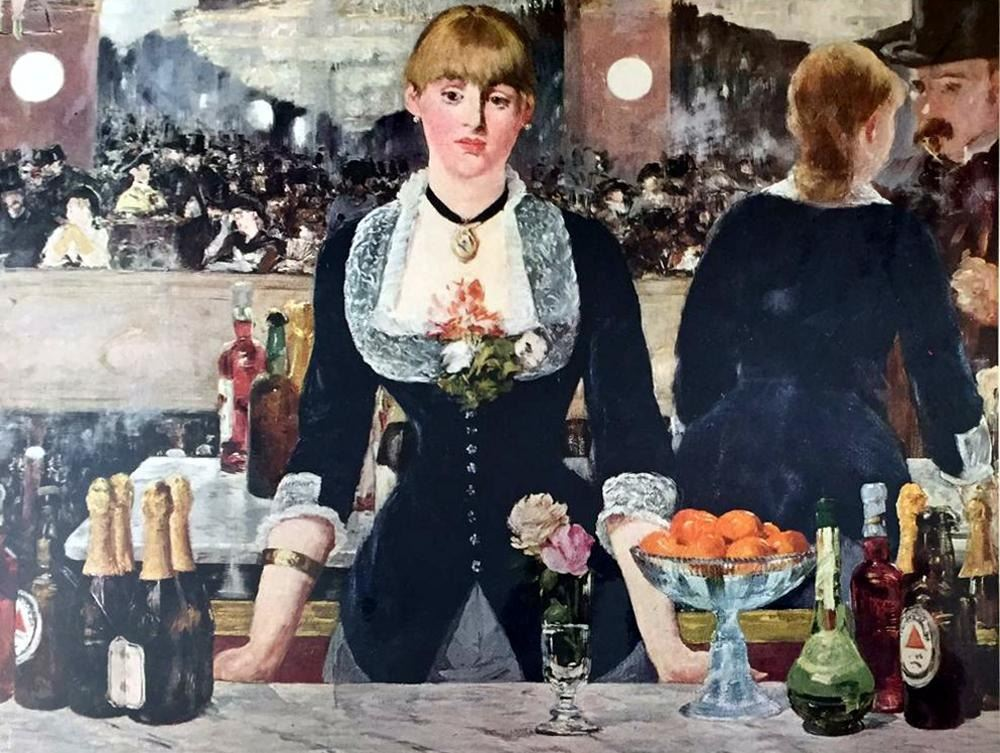
Manet, The Bar at the Follies-Bergere
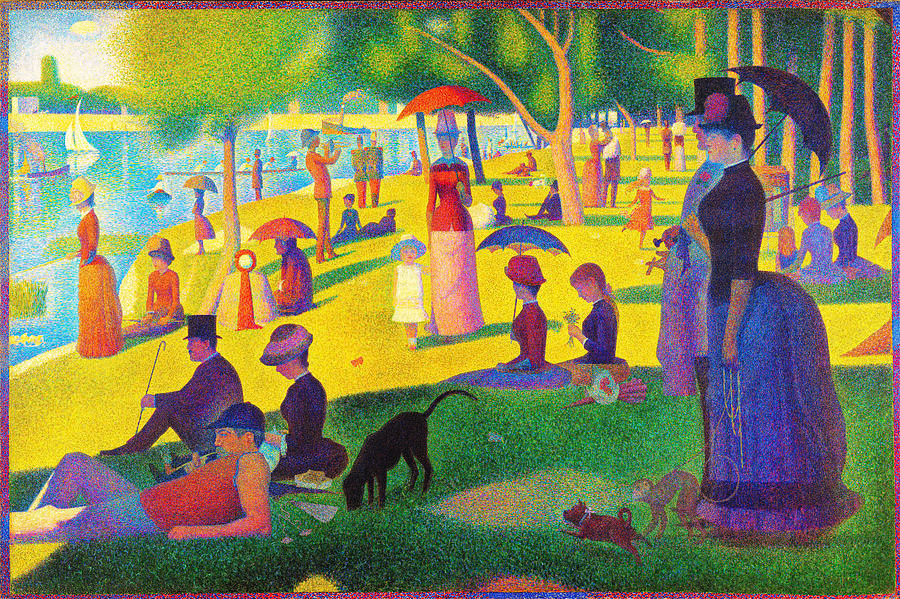
Seurat, Sunday Afternoon on the Island of La Grande Jette
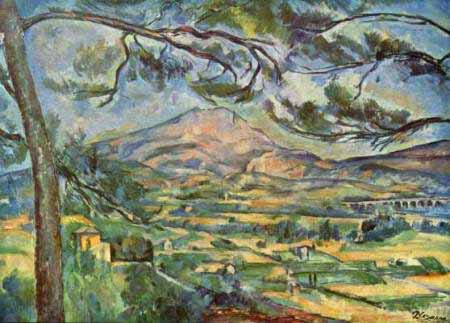
Cezanne, Mount St. Victoire
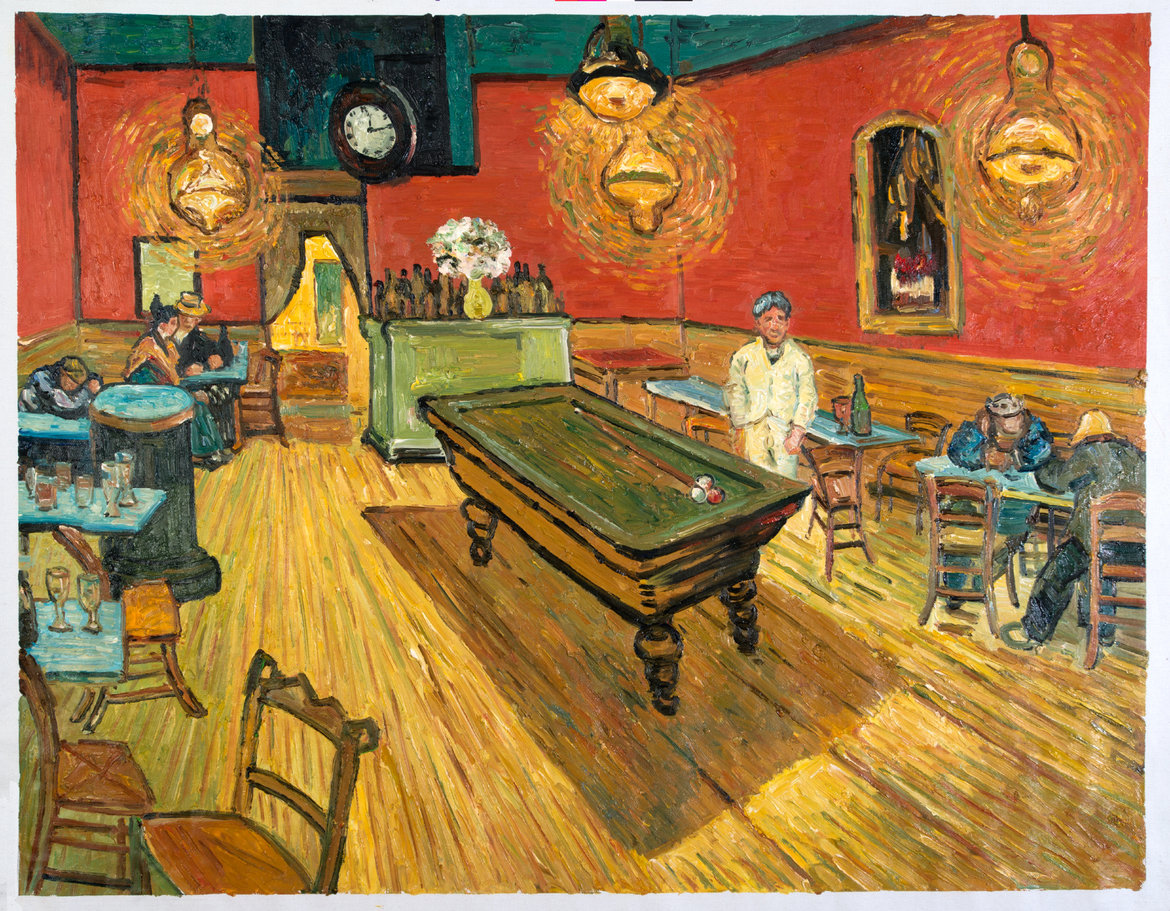
Van Gogh, Night Cafe
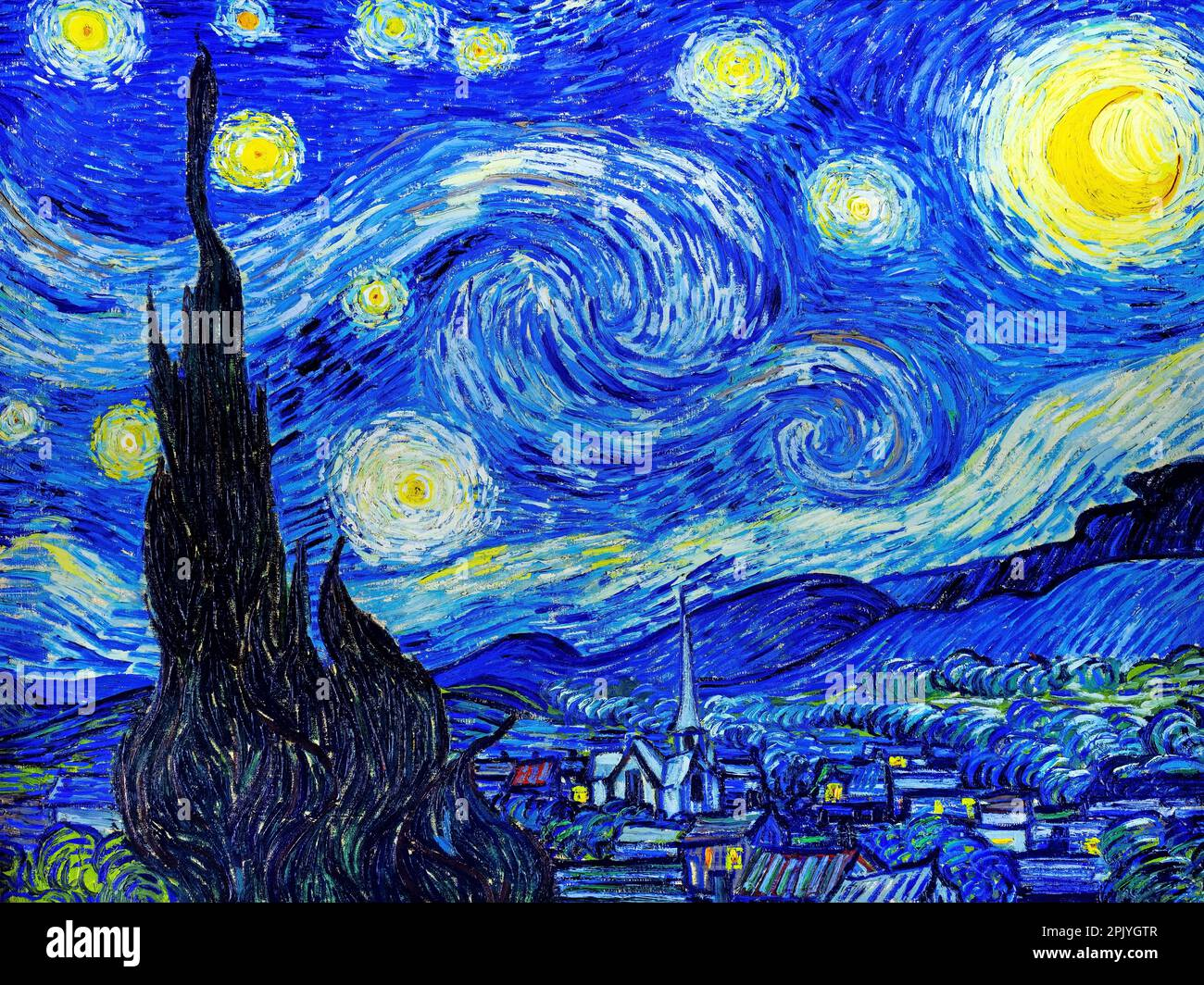
Van Gogh, Starry Night
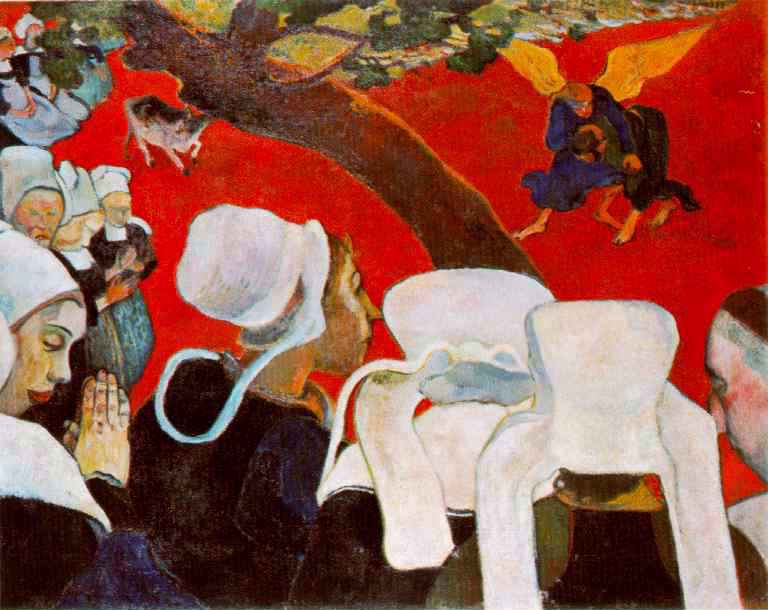
Gauguin, Vision After the Sermon
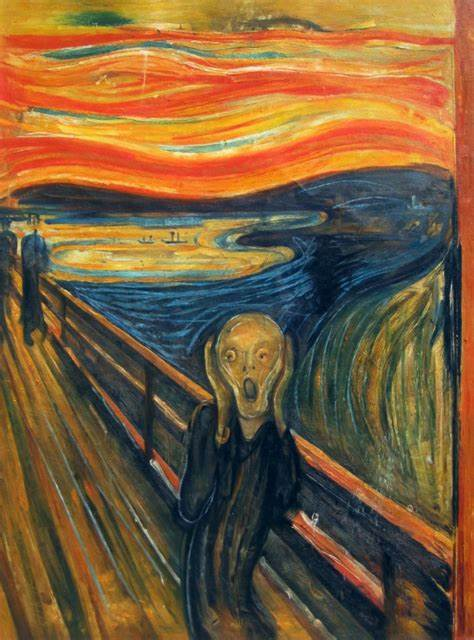
Munch, The Scream
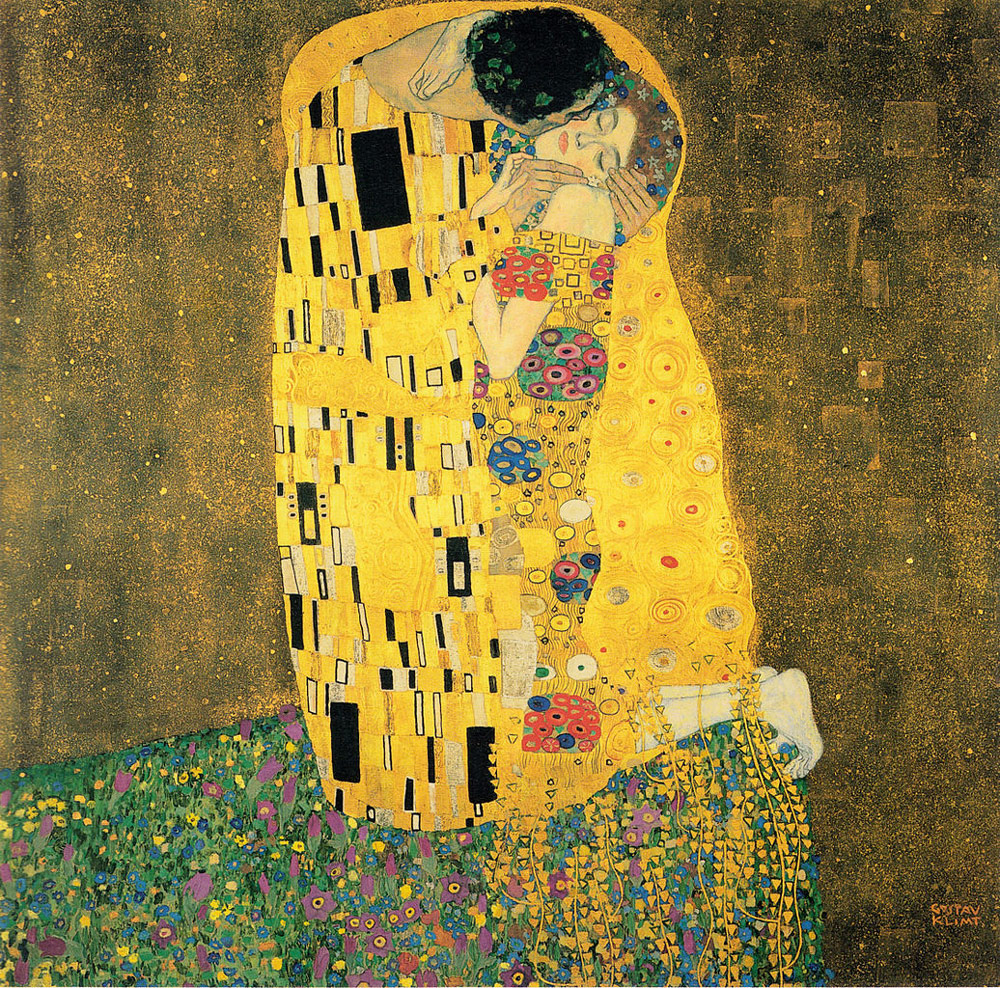
Klimt, The Kiss
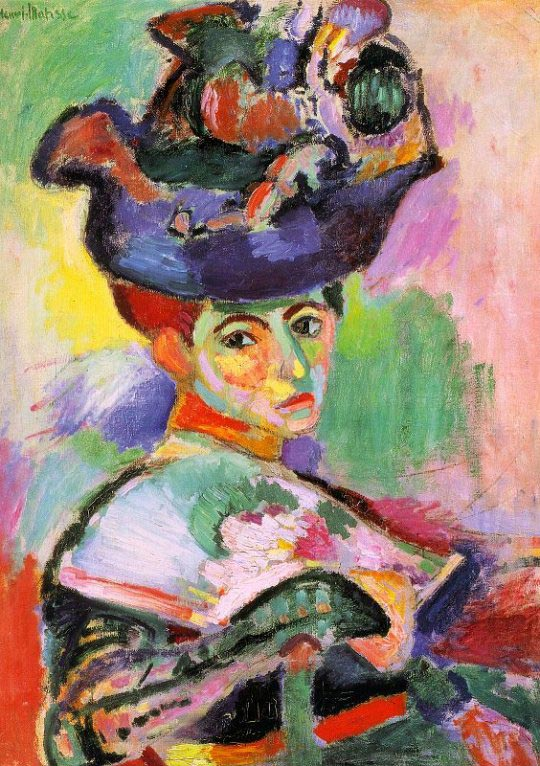
Matisse, Woman with a Hat
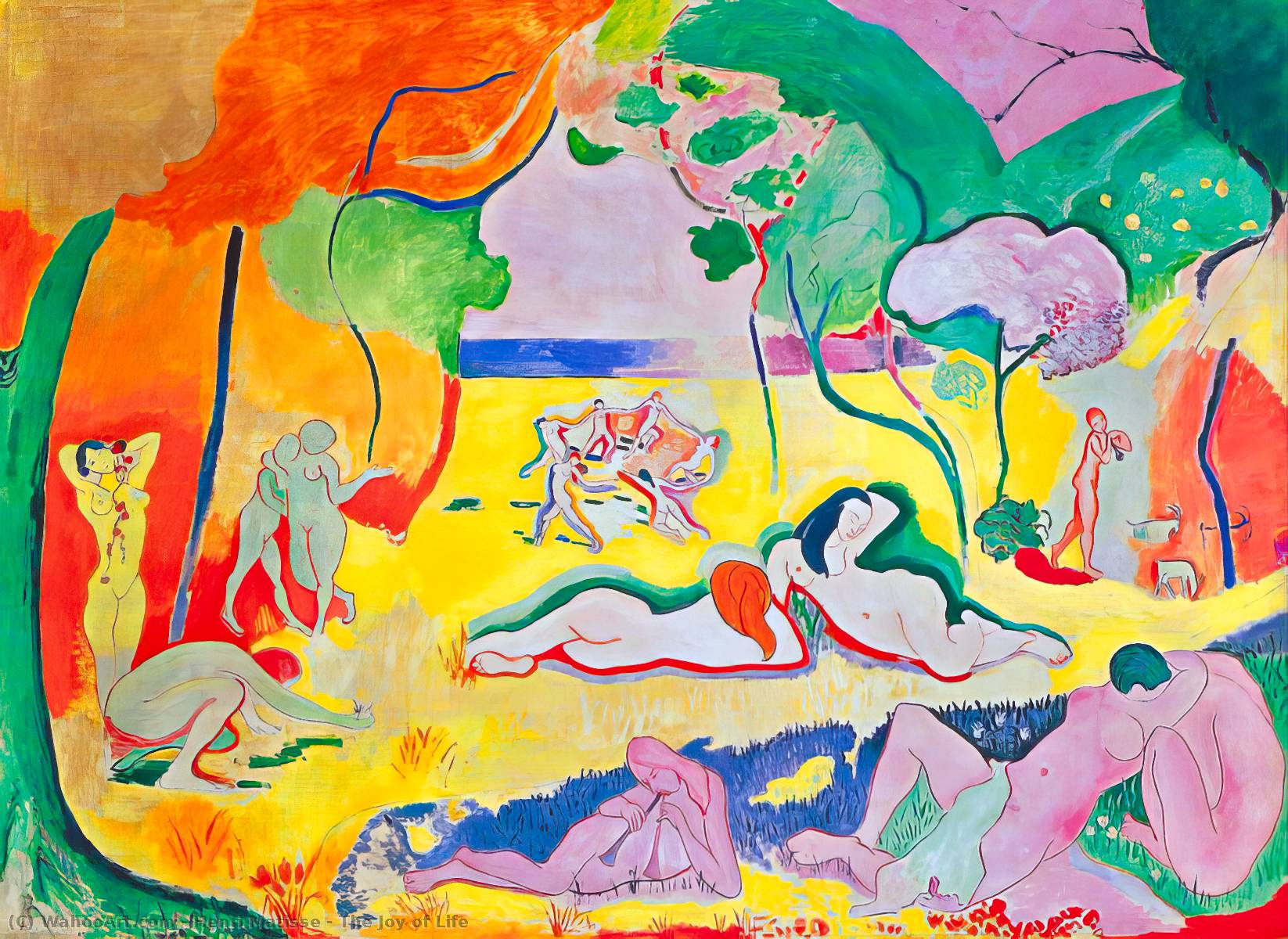
Matisse, The Joy of Life
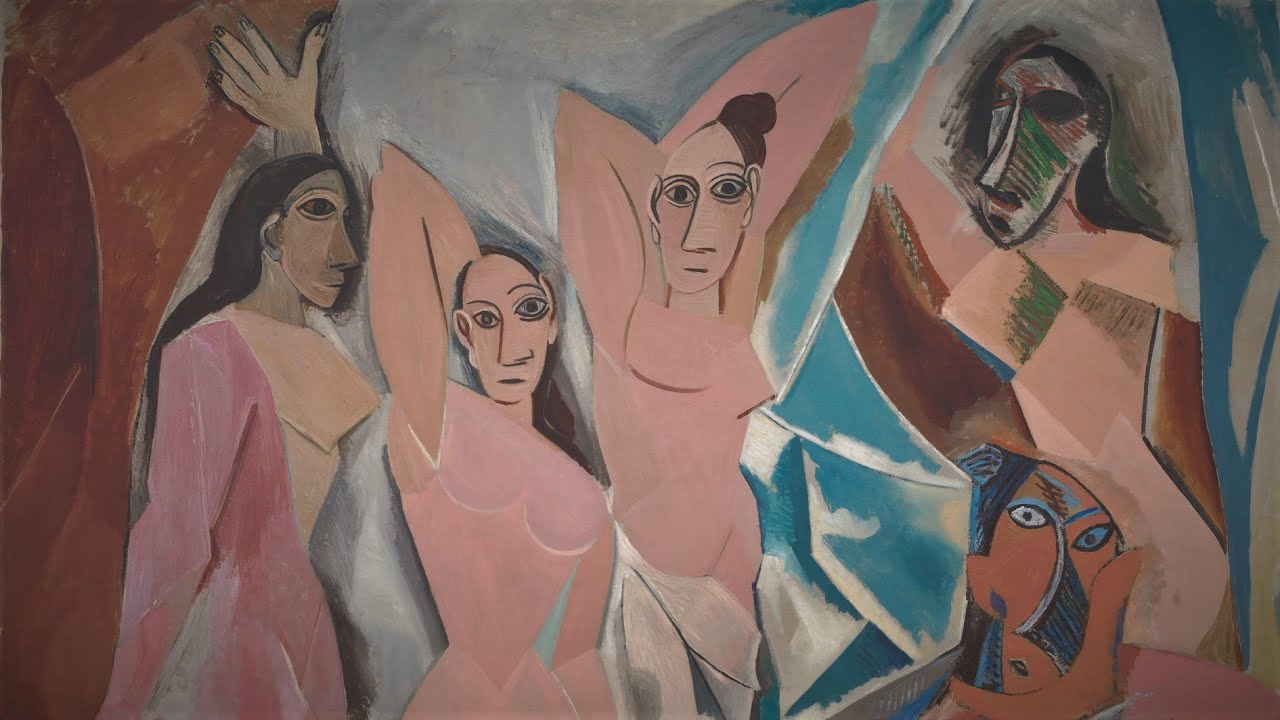
Picasso, Demoiselles D’Avignon
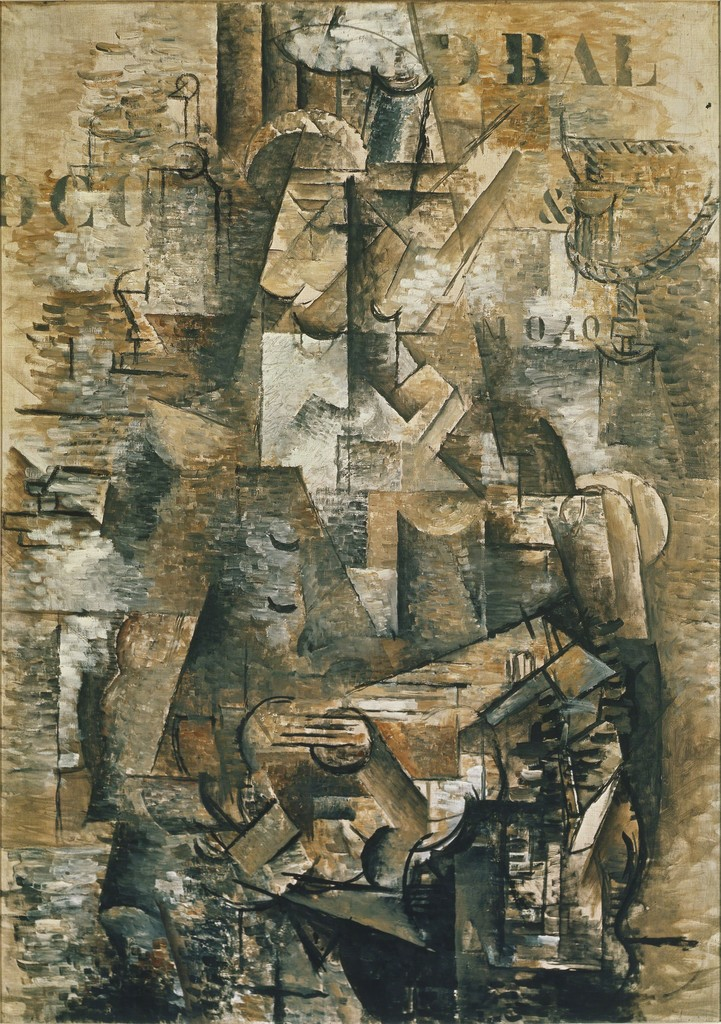
Braque, The Portugese
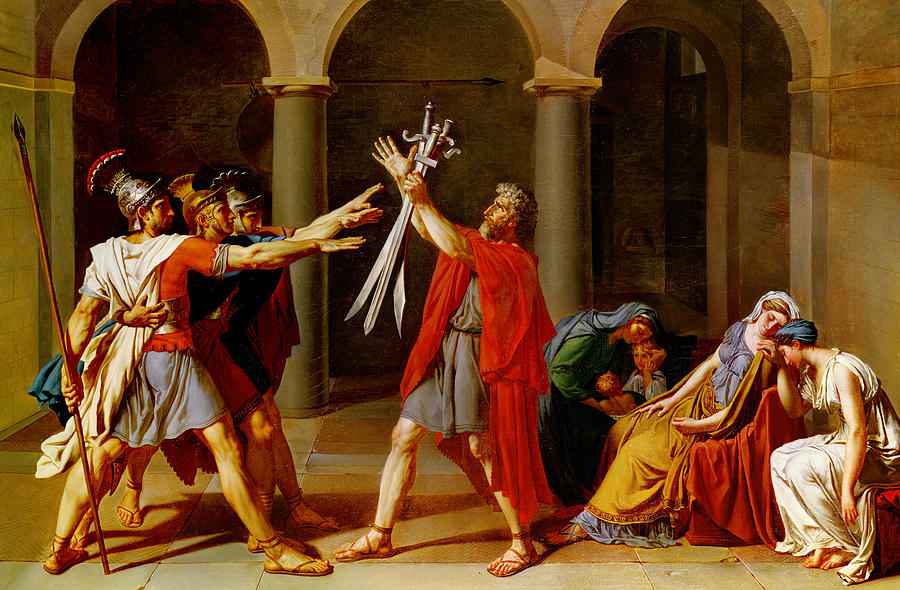
David, The Oath of the Horatii
Neo-classicism
France
David: most well-known painter of N-C
linear perspective, lines in the floor
roman clothing, known roman story
perfected body, very muscular arms and legs, extremely detailed
David, very political man, and apart of the French Revolution
Horatii, the father asked his three sons to fight to the death in battle, wives and mother of the sons are on the right, full of grief.
A time concerned about morals and making the right choice
David cleverly uses linear perspective and the building to divide the painting into thirds.